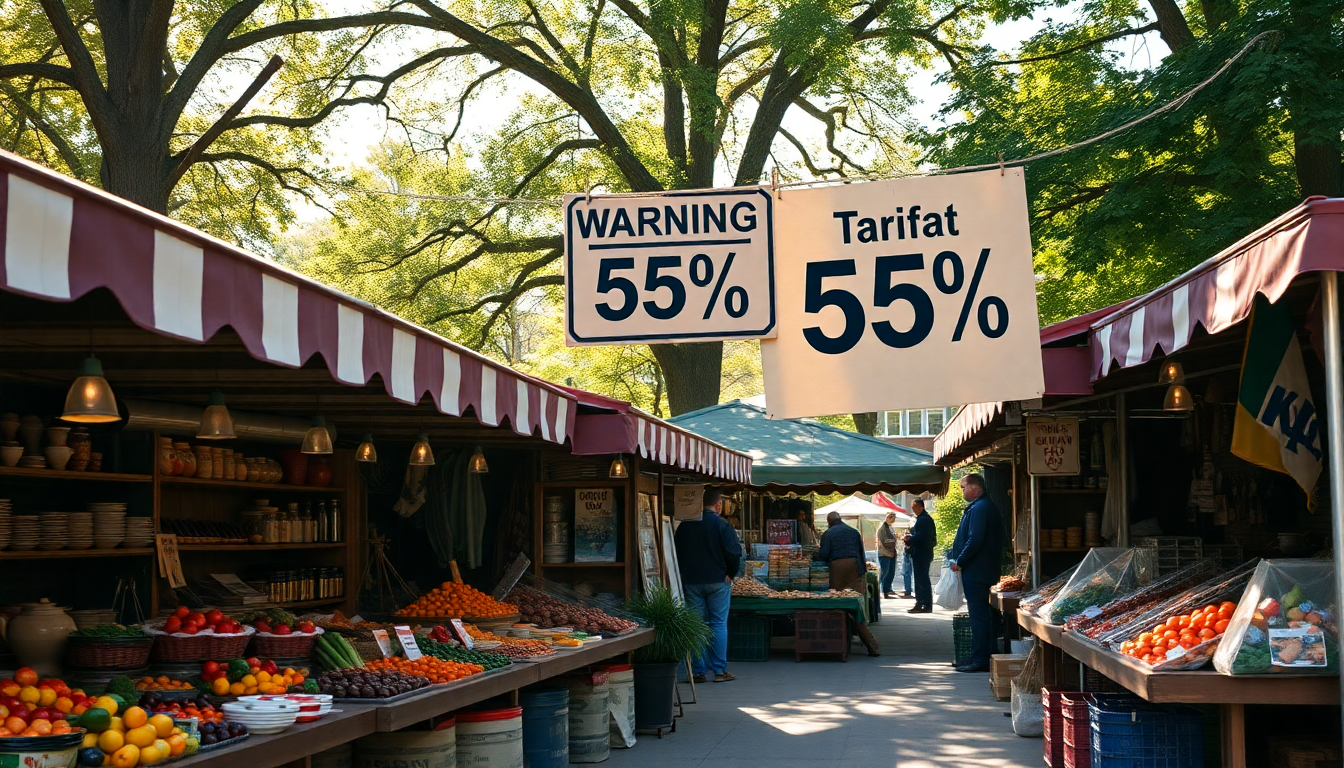Table of Contents
Picture this: a trade deal that promises to ease tensions between the US and China, yet here we are, still grappling with absurd tariffs that make you want to pull your hair out. At a staggering 55 percent, these tariffs are still sky-high, setting the stage for a new kind of economic warfare where everyone else pays the price.
Who thought trade negotiations could resemble a bad breakup?
The White House claims victory
The White House is spinning this trade deal as a glorious success, a triumph in the face of adversity. But let’s not kid ourselves—this isn’t a fairy tale.
President Trump has declared the deal done, waiting only for his and Xi Jinping’s signatures. Sure, let’s just ignore the fact that the tariffs, which were once a jaw-dropping 145 percent, are still far from reasonable. It’s like saying, “Hey, I’m only going to rob you a little!” when you’ve already cleaned out someone’s bank account.
Commerce Secretary Howard Lutnick announced that we’ve reached a framework for implementing the Geneva consensus, which sounds fancy but feels like a house of cards. The deal includes a clause where China will provide the US with rare earth elements—those little gems that are crucial for industries like automotive and tech.
But let’s face it, China holds all the cards here, producing 60 percent of these minerals. Now, isn’t that a cozy position for them?
Tariffs still hitting hard
Under the new agreement, the US will impose a 55 percent tariff on Chinese goods, while China will slap a 10 percent tariff on US imports.
Does that feel like a win to you? Because to many small business owners, it feels like a death sentence. The Main Street Alliance, representing small businesses, has said it best: “This is a death sentence and will destroy their American dream.” And who wouldn’t feel that way when you’re being hit by taxes that are effectively crippling your ability to compete?
You see, tariffs aren’t just numbers on a paper—they translate into actual costs.
Retailers like Walmart are already warning that prices will rise. Their CEO, Doug McMillon, laid it bare when he said that even with these so-called reduced tariffs, they can’t absorb the pressure. So much for saving the average consumer a buck, right?
The small business crisis
Speaking of the little guys, let’s talk about the small businesses that depend heavily on Chinese imports. Cassie Abel, founder of Wild Rye, has voiced the frustrations echoed across the board. She pointed out that finding shipping containers has become a nightmare, and the chances of getting products out of China within the required time frame are almost non-existent. So, what’s next? A race against time with tariffs breathing down their necks?
A pause that may not be a pause
The deal includes a 90-day pause on most tariffs, but who are we kidding? With the specifics still under wraps, it’s anyone’s guess when these new tariffs will actually kick in. The White House hasn’t even bothered to clarify, leaving everyone in limbo. Is this a strategic move to keep everyone on their toes, or just another example of chaos in the trade arena?
And let’s not forget the bizarre concession allowing Chinese students to continue attending US universities. A few weeks ago, this wasn’t even on the table. Now, it’s like throwing a bone to the people who have been left hanging in this trade drama. It’s absurd, and yet, it’s the reality we’re living in.
The market reaction
Despite the chaos, global markets seem to be reacting positively. In London, the FTSE climbed by a modest 0.1 percent, while the Nikkei in Tokyo saw a 0.6 percent increase. But back home in the US, things are looking a bit more subdued. The S&P 500 dipped by 0.3 percent, showing that optimism can only go so far when inflation data is also coming into play.
So, where does that leave us? Stuck in a never-ending loop of negotiations, uncertainty, and rising costs. The tariffs may have been slashed, but the underlying issues remain unresolved. It’s like putting a band-aid on a gaping wound and calling it a day. At the end of the day, it’s the average consumer who bears the brunt of these decisions, while the bigwigs in charge continue their game of political chess.





